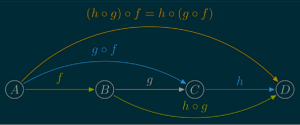One of my friends showed me his new gaming computer and said that the GPU could do 1.3 teraflops (1.3 trillion floating point operations per second) which is about 500 times faster than my home computer, so I thought, “Imagine how quickly we could search a game tree.” So I started looking around the internet for a super-great GPU chess engine and found basically nothing!! Turns out that the amount of memory per thread is too low, the size of the L1 cache is too small, and the alpha-beta pruning algorithm is not quite parallel enough for GPUs to play chess well. Here is a nice graphic of the L1 access time for a few CPUs and GPUs.

In the paper “Parallel Game Tree Search Using GPU” (2011), L’ubomír Lackovic improved the tree search speed by a factor of two to three by using a GPU instead of the more traditional CPU based tree search for Czech draughts (similar to American Checkers). His tests were based on the ATI Radeon 4890 GPU, the Nvidia GTX460 GPU, and the quad-core processor Intel i5 750 CPU. I had hoped for more speed.
In “Large-Scale Parallel State Space Search Utilizing Graphics Processing Units and Solid State Disks” (2011), von Damian Sulewski invented and test several algorithms for search, reviewed game theory algorithms, and applied GPU processing to several games including “Nine Men’s Morris“. Sulewski used an Intel Core i7 CPU 920 with an NVIDIA GeForce 285 GTX GPU to run his tests. He reported that the GPU was faster by a factor of three to twelve as long as sufficient RAM was available. If the computer ran out of RAM and had to use disk storage, then the GPU performance degraded significantly. He states,
“The observed speed-ups of over one order of magnitude have been obtained (plotted in bold font), exceeding the number of cores on most current PCs. Note that this assertion is true for the dual 6-core CPUs available from Intel, but not on a dual Xeon machine with two quad-core CPUs creating 16 logical cores due to multi-threading. Nonetheless, better speed-ups are possible since NVIDIA GPUs can be used in parallel and the Fermi architecture (e.g. located on the GeForce GTX 480 graphics card) is coming out which will go far beyond the 240 GPU cores we had access to.
For larger levels, however, we observe that the GPU performance degrades. When profiling the code, we identified I/O access as one limiting factor. For example, reading S8,8 from one HDD required 100 seconds, while the expansion of 8 million states, including ranking and unranking required only about 1 second on the GPU.”
So GPU’s are not the silver bullet for games yet.

